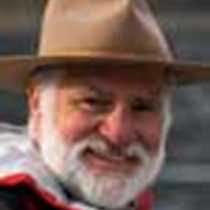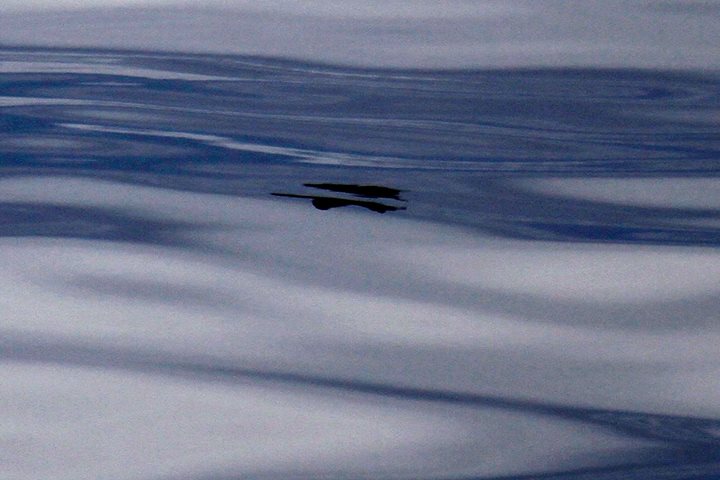After the topsy-turvy day yesterday, today could not have begun in a better fashion, almost glassy seas under a grey sky and, in the distance, the South Shetland Islands. As we approach a number of fin whales, the second largest whale on earth, are spotted. They are feeding on krill, taking in huge gulps of sea water and then filtering out their food with their baleen plates.
As we near land we begin to appreciate more the ice, such a predominant feature to the White Continent; on the lower islands the snow and ice cover is like a dome and on the steeper mountainsides glaciers cascade down, often heavily crevassed.
Our first destination this morning is Cape Shirreff and as we near land the buildings of the little U.S. research base can be discerned. Conditions are ideal to be able to drop off Kyler and soon enough one of the Zodiacs is headed for the shore.
All around the ship there are large numbers of humpback whales feeding on krill. On occasion we catch sight of this little crustacean under the surface in large swarms. Close to the whales there are good numbers of pintado petrels also feeding on this hugely important food source. The whales, letting out bubbles, slowly rise to the surface, their huge mouths agape and their pleated lower mouths and throats stretched with vast quantities of water. They then gently fall back into the water, closing their mouths and pushing the water out with their their tongues and the clearly visible baleen plates, filtering out all the food. It is a remarkable experience for us to see this so close by and in such serene conditions.
After the return of the Zodiac the ship heads off along the coast of Livingstone Island towards English Strait. The passage is impressive and the columnar basalt on the rocky outcrops about the ship clearly visible. All about us hundreds of penguins can be seen porpoising as they travel to and from their feeding grounds.
In the afternoon we make our first landfall at the very picturesque island of Half Moon. The first ashore are those interested in a long walk up to one of nearby hills. Progress is good under the hard snow; along the way we stop at viewpoints to enjoy the spectacular scenery surrounding us. As we make it to the high point we pass a number of nesting south polar skuas. We skirt around them to not disturb them.
The return leg proves a real challenge for us as we regularly sink deep into the soft snow on the far side of the island. For most it is a fun adventure and there is relief when the beach is reached and thus making the second half of the walk to the chinstrap penguin rookery a lot easier.
The chinstrap penguins are as raucous as usual and busily caring for their chicks; this is a full time occupation for mum and dad as they cope with their demanding chicks. There is so much to enthrall us and oftentimes the best course of action is to simply sit down in a quiet spot and let everything slowly soak in.
During Captain’s welcome cocktails and dinner there is much evidence that we are all suffering from sensory overload after such an exhilarating day. The first day has been stunning.







